Building the Perfect Shed Foundation: Tips and Tricks for a Successful Project

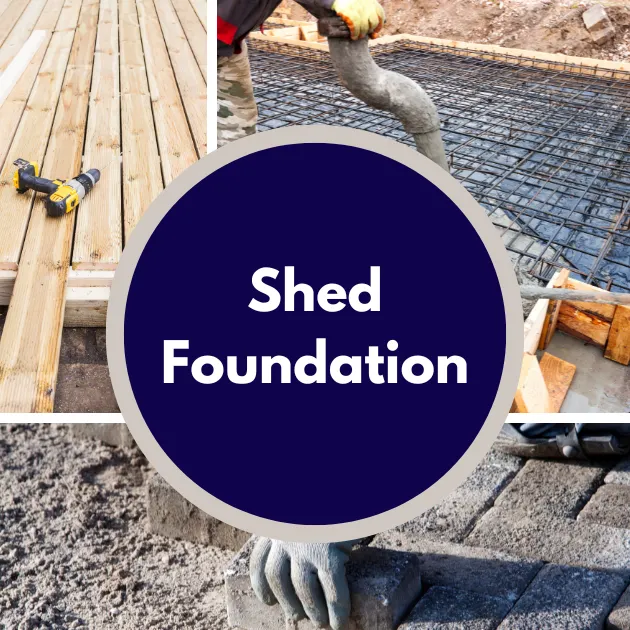
Building a shed requires more than just choosing a design and materials; it also involves selecting the right foundation. The foundation is critical to ensuring that the shed is stable and durable, and there are a variety of options to choose from. In this article, I'll provide a comprehensive guide to the different types of foundations that your shed may need, including concrete slabs and gravel bases, and I'll also provide eight different keyword-rich titles to help you find the information you need.
Types of Shed Foundations:
Gravel Foundation: A gravel foundation is a simple and cost-effective way to create a stable base for various outdoor structures, such as sheds, garages, and small homes. It involves pouring a layer of compacted gravel over a leveled area to create a flat and stable surface for the structure to sit on.
The first step in creating a gravel foundation is to prepare the site. This involves clearing any vegetation or debris, leveling the area, and ensuring that the ground is compacted and free of any soft spots. Once the site is prepared, a layer of crushed stone or gravel is poured over the area, typically to a depth of 4-6 inches.
The gravel is then compacted using a vibrating plate compactor, which helps to compress the gravel and create a stable base. It's important to ensure that the gravel is evenly distributed and compacted, as any gaps or soft spots can lead to instability and shifting over time.
One of the main benefits of a gravel foundation is its cost-effectiveness. Compared to other types of foundations, such as concrete, a gravel foundation is relatively inexpensive and requires minimal labor and equipment. It's also relatively easy to install and can be done by homeowners with basic DIY skills.
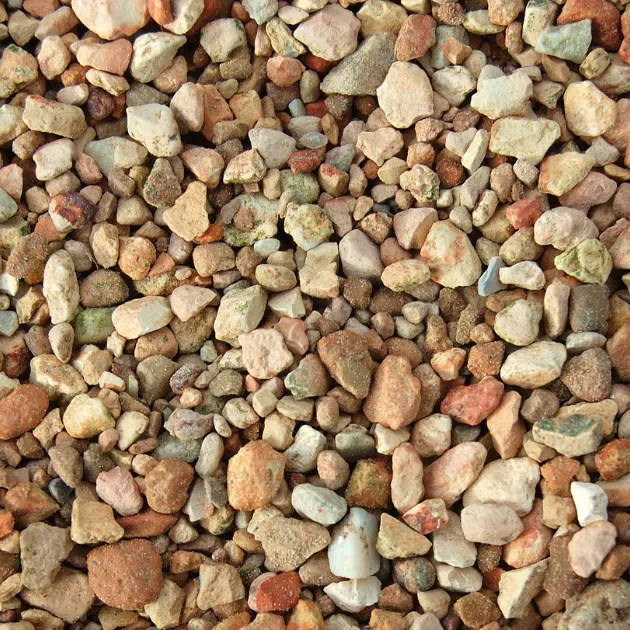
Another benefit of a gravel foundation is its versatility. It can be used for a wide range of structures and can be easily modified or expanded if needed. It also allows for good drainage, which is important for preventing water damage and mold growth.
However, there are some drawbacks to a gravel foundation. It may not be suitable for heavier structures or areas with poor soil conditions, as it may not provide enough support or stability. It also requires periodic maintenance, such as adding more gravel or re-leveling the surface.
A gravel foundation is a simple and cost-effective way to create a stable base for outdoor structures. While it may not be suitable for all situations, it's a great option for those looking for an affordable and versatile foundation solution.
Concrete Slab: A concrete slab is a more permanent foundation option that provides strong support for larger sheds. It is durable and long-lasting, but also more expensive than other options.
A concrete slab is a common foundation solution used in construction projects, ranging from residential homes to large commercial buildings. It involves pouring a thick, flat layer of concrete over a prepared site, which provides a sturdy base for the structure to be built upon.
The first thing you need to do in creating a concrete slab is to prepare the site. This involves clearing the area of any debris, leveling the ground, and creating formwork to contain the concrete. The formwork is typically made of wood or metal and serves as a mold for the concrete to be poured into.
Once the site is prepared, a layer of crushed stone or gravel is laid down to create a stable base for the concrete. This helps to prevent the slab from settling or cracking over time. Reinforcing steel bars, or rebar, may also be placed within the formwork to provide additional strength and support.
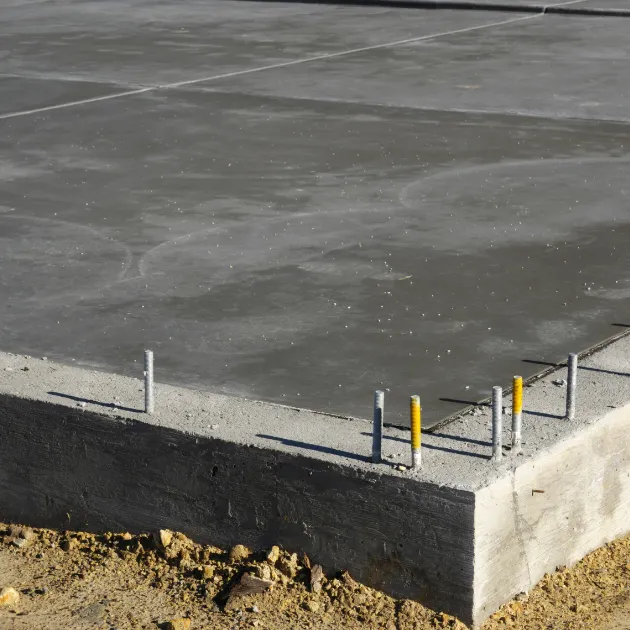
The concrete is then poured into the formwork and spread out evenly using a tool called a screed. The concrete is then left to cure and harden for several days, during which time it's important to keep the surface moist to prevent cracking.
One of the main benefits of a concrete slab foundation is its strength and durability. It can withstand heavy loads and is resistant to damage from moisture and pests. It also provides a level and stable surface for the structure to be built upon.
Here are the drawbacks of a concrete slab. It can be more expensive and labor-intensive to install compared to other foundation solutions, such as a gravel foundation. It's also less versatile and can be more difficult to modify or repair once it's in place.
A concrete slab foundation is a strong and durable option for construction projects. While it may be more expensive and less versatile than other foundation solutions, it provides a stable base for a wide range of structures and is resistant to damage from moisture and pests.
Pavers: Pavers are another option for creating a solid, flat surface for your shed. They are easy to install and can be adjusted to create a level surface.
Pavers are a popular choice for creating outdoor surfaces such as patios, walkways, and driveways. A proper foundation is essential to ensure that the pavers are stable, level, and durable over time. Pavers are typically installed over a base layer of crushed stone and sand, which provides a stable and level surface for the pavers to rest on.
Your first step in creating a paver foundation is to prepare the site. This involves removing any vegetation or debris and ensuring that the ground is level and compacted. A layer of crushed stone is then poured over the site and compacted using a vibrating plate compactor. This helps to create a stable base that will prevent the pavers from sinking or shifting over time.
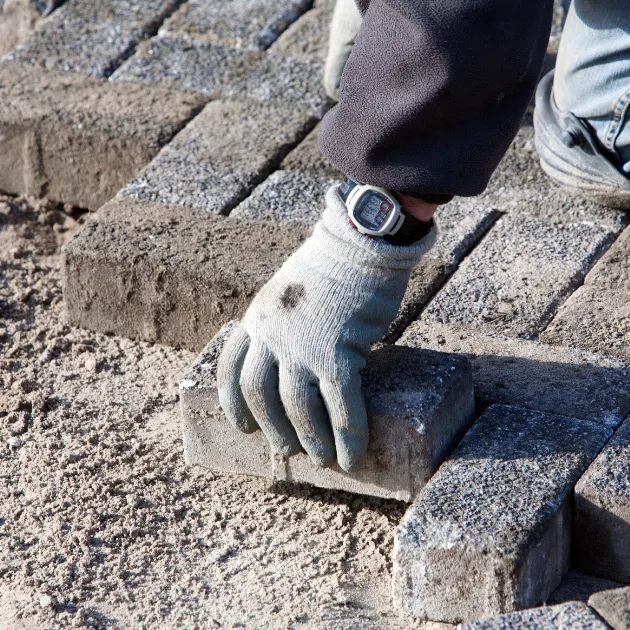
Once the crushed stone base is in place, a layer of sand is spread over the top. This provides a level surface for the pavers to be laid on and helps to distribute weight evenly across the surface. The sand is then also compacted to create a solid base.
The pavers are then laid out in the desired pattern, with small gaps between each one. These gaps are filled with sand, which helps to keep the pavers in place and prevent them from shifting over time. The sand is then swept over the surface of the pavers to fill in the gaps completely.
One of the main benefits of a paver foundation is its versatility. Pavers come in a wide range of shapes, sizes, and colors, making it easy to create a custom look that complements the surrounding landscape. They are also relatively easy to install and can be done by homeowners with basic DIY skills.
There are some drawbacks to a paver foundation. The gaps between the pavers can be prone to weed growth and may require periodic maintenance to keep them clear. They may also be more prone to cracking or shifting over time compared to other foundation solutions, such as a concrete slab.
Wooden Beams: Wooden beams can be used to create a strong foundation for smaller sheds. They are easy to install and can be adjusted to level the shed.
Wooden beams have been used as a foundation solution for centuries, particularly in areas with a plentiful supply of timber. Wooden beam foundations involve laying large, sturdy beams of wood horizontally over a prepared site, which provides a sturdy base for the structure to be built upon.
The first thing to do in creating a wooden beam foundation is to prepare the site. This involves clearing the area of any debris and leveling the ground. The beams are then laid out in a grid pattern, with spacing and size determined by the weight and size of the structure to be built.
Once the beams are in place, they are leveled and secured together using metal brackets or wooden pegs. A layer of crushed stone or gravel is then placed over the beams, which helps to distribute the weight of the structure evenly and prevents settling or shifting over time.
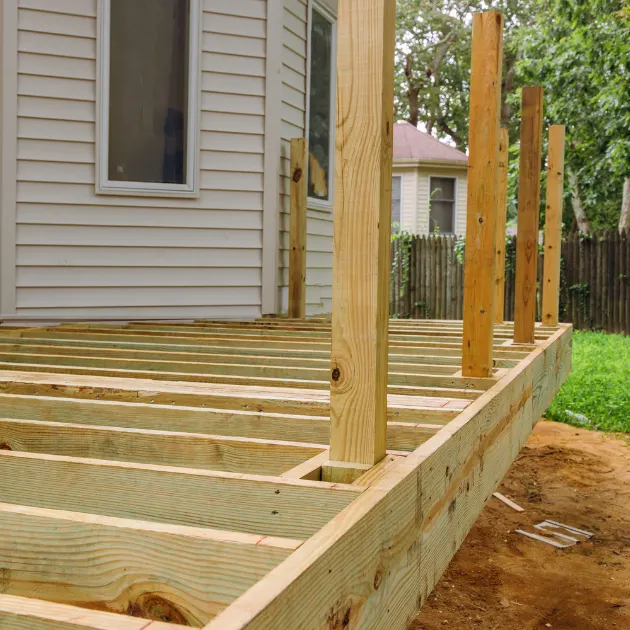
The wooden beam foundation has some benefits over other foundation solutions. It is relatively inexpensive and can be constructed using local materials, making it a popular choice in areas with a plentiful supply of timber. It can also provide good insulation and ventilation for the structure, which can help to regulate temperature and humidity levels.
As with any foundation, there are some drawbacks to a wooden beam foundation. It is more susceptible to damage from pests and moisture than other foundation solutions and may require regular maintenance to prevent rot and decay. It may also be less durable over time and may need to be replaced or repaired more frequently.
A wooden beam foundation can be a cost-effective and versatile option for construction projects, particularly in areas with a plentiful supply of timber. While it may require regular maintenance and be less durable over time compared to other foundation solutions, it can provide good insulation and ventilation for the structure and be a suitable option for some projects.
Deck Blocks: Deck blocks are a cost-effective option that provides solid support for smaller sheds. They are easy to install and can be adjusted to create a level surface.
Deck blocks are a popular foundation solution for building decks, especially for small or low-level structures. Deck blocks are essentially precast concrete blocks that are designed to support wooden posts or beams, which in turn support the deck surface.
The first step in using deck blocks is to prepare the site. This involves clearing the area of any debris and leveling the ground. The deck blocks are then placed at intervals along the perimeter of the deck, with spacing and size determined by the weight and size of the structure to be built.
Once the deck blocks are in place, wooden posts or beams are secured into them using metal brackets or screws. The posts or beams are then leveled and secured together using additional brackets or screws. The deck surface is then laid on top of the posts or beams, typically using pressure-treated lumber.
Deck blocks have some benefits over other foundation solutions. They are relatively inexpensive and easy to install, making them a popular choice for DIY projects. They also provide good support for low-level decks or structures and can be adjusted easily if necessary.
As you know, there are some drawbacks to using deck blocks. They may not be suitable for larger or higher decks, as they may not provide enough stability or support. They are also more susceptible to movement or shifting over time compared to other foundation solutions, such as concrete footings.
Deck blocks can be a cost-effective and convenient option for building small or low-level decks. While they may not be suitable for larger or higher structures, they can provide good support and be adjusted easily if necessary.
Concrete Footings: Concrete footings are a permanent foundation option that provides strong support for larger sheds. They require more planning and preparation, but provide a solid base for the shed.
Concrete footings are a common and reliable foundation solution for a variety of construction projects, from small residential structures to large commercial buildings. Concrete footings provide a sturdy base for the structure to be built upon and help to distribute the weight evenly over a larger area, which helps to prevent settling or shifting over time.
Your number one step in creating a concrete footing foundation is to prepare the site. This involves clearing the area of any debris and excavating the ground to the appropriate depth and width for the footings. The concrete footings are then poured into the excavated holes, typically using reinforced steel bars for added strength and stability.
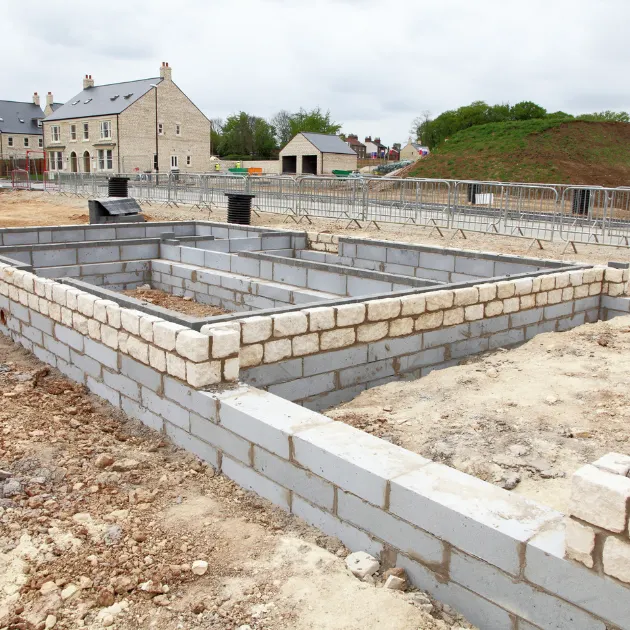
Once the concrete footings are in place, wooden or steel posts or beams can be secured into them using metal brackets or screws. The posts or beams are then leveled and secured together using additional brackets or screws. The structure can then be built upon the posts or beams, using a variety of materials such as wood, steel, or concrete.
Concrete footings have many benefits over other foundations. They are durable and long-lasting and can provide strong support for a variety of structures. They are also resistant to moisture and pests, which can help to prevent rot or decay over time.
However, there are some drawbacks to using concrete footings. They can be more expensive and time-consuming to install compared to other foundation solutions and may require specialized equipment and expertise. They may also be less suitable for certain soil types or areas with a high water table, which can affect the stability and durability of the footings over time.
Concrete footings are a reliable and durable foundation solution for a variety of construction projects. While they may be more expensive and time-consuming to install, they can provide strong support and be resistant to moisture and pests. Consultation with a qualified engineer and consideration of local building codes is always recommended before choosing any foundation solution.
Treated Wood Foundation: A treated wood foundation is a durable and long-lasting option that provides good support for sheds. It is also relatively easy to install.
Treated wood foundations are a relatively new and innovative foundation solution that has gained popularity in recent years. They involve using pressure-treated lumber to create a sturdy and durable foundation for a variety of construction projects.
The most important step in creating a treated wood foundation is to prepare the site. This involves clearing the area of any debris and leveling the ground. The treated lumber is then laid out in a grid pattern, with spacing and size determined by the weight and size of the structure to be built.
Once the treated lumber is in place, it is secured together using metal brackets or screws. A layer of crushed stone or gravel is then placed over the lumber, which helps to distribute the weight of the structure evenly and prevents settling or shifting over time.
Treated wood foundations have some benefits over other foundations. They are relatively inexpensive and easy to install, making them a popular choice for DIY projects. They are also resistant to rot and decay, as the lumber is treated with chemicals to prevent moisture and pest damage.
As usual, there are some drawbacks to using treated wood foundations. They may not be suitable for larger or higher structures, as they may not provide enough stability or support. They are also more susceptible to fire damage compared to other foundation solutions, which may affect their suitability in certain areas.
Treated wood foundations can be a cost-effective and versatile option for construction projects, particularly for small or low-level structures. While they may not be suitable for larger or higher structures, they can provide good resistance to rot and decay and be a suitable option for some projects. Consultation with a qualified engineer and consideration of local building codes is always recommended before choosing any foundation solution.
Crawl Space Foundation: A crawl space foundation provides a raised platform for your shed, which can be useful for areas that are prone to flooding. It is more expensive than other options but provides good protection against water damage.
A crawl space foundation is a common type of foundation used in many residential and commercial construction projects. It involves creating an open space between the ground and the bottom of the building, which can be accessed via a small entrance or hatch.
Before you do anything else your first step in creating a crawl space foundation is to prepare the site. This involves clearing the area of any debris and excavating the ground to the appropriate depth for the crawl space. The foundation walls are then constructed using materials such as concrete, cinder blocks, or brick.
Once the foundation walls are in place, a moisture barrier is typically installed over the ground surface. This helps to prevent moisture from seeping up into the crawl space and causing damage to the building structure. Insulation may also be installed around the walls and floor of the crawl space to help regulate temperature and reduce energy costs.
Crawl space foundations have some benefits over other foundation solutions. They can provide easy access to plumbing, electrical, and HVAC systems, which can make maintenance and repairs easier and less expensive. They can also provide good ventilation, which can help to reduce moisture and improve air quality in the building.
Again, there are some drawbacks to using crawl space foundations. They can be more susceptible to pest infestations and moisture damage compared to other foundation solutions. They may also require more frequent maintenance and repairs to prevent damage to the building structure.
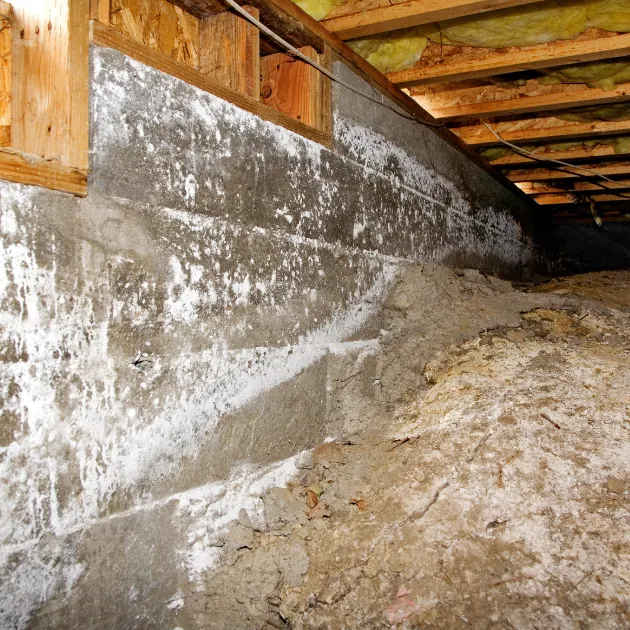
Crawl space foundations can be a versatile and cost-effective foundation solution for many construction projects. While they may require more maintenance and be more susceptible to certain types of damage, they can provide good ventilation and easy access to building systems. Consultation with a qualified engineer and consideration of local building codes is always recommended before choosing any foundation solution.
In conclusion, choosing the right foundation for a shed is essential for ensuring a sturdy and long-lasting structure. There are many different types of shed foundations to choose from, each with its own advantages and disadvantages. Concrete slabs, pavers, wooden beams, deck blocks, concrete footings, treated wood, and crawl space foundations are just some of the options available.
Factors to consider when choosing a shed foundation include the size and weight of the shed, local building codes, and the soil and weather conditions of the building site. It is important to consult with a qualified engineer and follow local building codes and regulations to ensure a safe and stable foundation.
With the right foundation in place, a shed can provide a useful and attractive addition to any property, serving as a storage space, workshop, or even a place for relaxation and recreation. By taking the time to choose the right foundation and properly install it, homeowners can ensure that their shed will be a valuable and functional asset for years to come.
